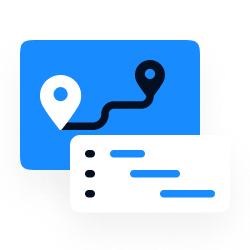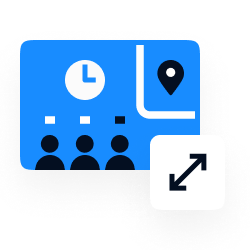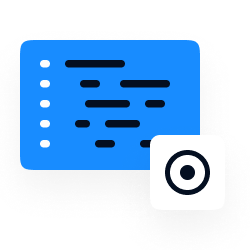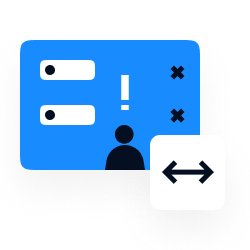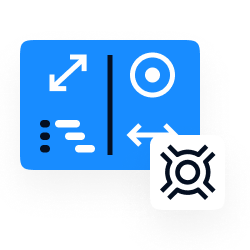Route Optimization Basics

When your drivers have hundreds, if not thousands, of destinations or clients to visit, planning routes manually is a time-intensive and inefficient solution.
In many industries, driver wages and fuel costs alone make up 59.8% of the total operational cost per mile. Even small improvements to your driver’s routes can not only help you deliver packages or serve your clients faster but can have a significant impact on your bottom line. With proper route optimization tools, your business could save up to 20% in mileage and improve your order capacity by as much as 100% without increasing your fleet.
In this guide, we’ll give you a complete breakdown of what route optimization is and how it can benefit businesses of any size. We’re going to cover route optimization from head to toe today, but if there’s specific knowledge you need, feel free to click one of the section links below to skip ahead:
- What Is Route Optimization?
- What Are the Benefits of Route Optimization?
- How Is Route Optimization Implemented?
- How Do You Optimize Route Scheduling?
- What Is Route Optimization Software?
- What Is the Best Route Optimizer?
What Is Route Optimization?
Route optimization is the process of improving routes for better efficiency and cost-effectiveness. Effective route optimization helps businesses maximize completed orders or deliveries while incorporating many criteria including driver schedules, available hours, total stops, fulfillment estimates, and legal requirements. Delivery routing isn’t just about finding the shortest path from point A to point B, it’s about finding the most efficient route for many different variables.
Route optimization is relevant to your company, whether you offer direct-to-consumer deliveries or are in a service industry where your technicians visit client homes or businesses.
Routing your drivers and technicians can be a costly and frustrating process, but with the right tool it can be automated — saving you time, money, and improving customer satisfaction.
What Is an Optimized Route?
An optimized route is a term used in transportation planning that refers to the most effective route for traveling from one location to another in terms of distance traveled and cost efficiency, but that’s really just the tip of the iceberg.
If you run a delivery or field service business, you know there are a lot of moving parts. Many of those moving parts can be positively affected by the proper use of route optimization.
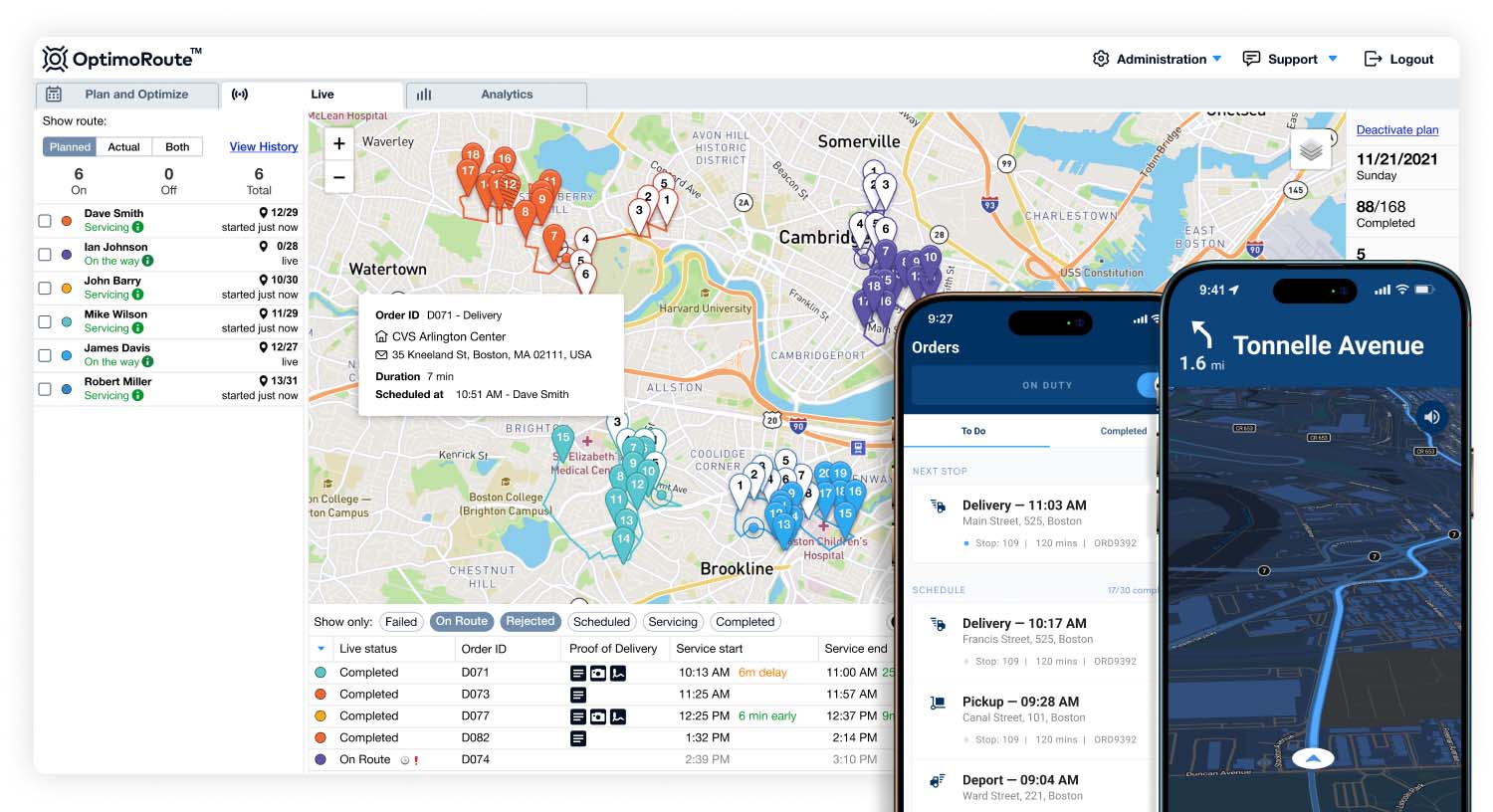
For example, using route optimization techniques, you can account for factors like driver availability, vehicle capacity, and customer requirements like time constraints, and you can plan for all of this well in advance while maintaining the ability to make real-time route changes as unexpected challenges arise.
So, an optimized route drives efficiency in terms of cost, distance, and overall operational effectiveness.
What Are the Benefits of Route Optimization?
No matter if you’re scheduling and routing for a mom-and-pop florist or a logistics company operating nationwide, the challenges you face are universal:
- Maximizing the orders and revenue from your existing fleet and workforce is hard.
- Manual scheduling and planning can take forever and is not scalable.
- Fuel and driver wages are a significant expense for your business.
- Adjusting to cancellations and sick employees on the fly is complicated.
- Delayed and missed deliveries lead to unhappy customers.
Route optimization software can help. Here’s how:
#1. Increase revenue per driver and reduce costs
What business isn’t interested in reducing their operating costs and improving revenues per driver? For any business that does delivery routing or on-site service, low margins are a constant challenge. A key part of mobile workforce management is to ensure that you are operating as efficiently as possible and not wasting fuel or manpower.

When it comes to routing and scheduling, you have to answer a number of challenging questions to optimize your efficiency:
- What route will yield the best driver optimization and reduce overhead?
- Should you pay for overtime or bring in outsourced contractors?
By factoring in all costs, from hourly wages to mileage (and everything in between), route optimization can help you save without sacrificing the quality of service, or breaking regulations. It also helps you maximize your fleet, enabling each driver to complete more orders or service calls, increasing your revenue and profits.
#2. Scale your delivery team without extra dispatch/planning resources
Your team spends hours organizing and reorganizing people, schedules, shifts, deliveries, and appointments on a daily basis.
With route optimization tools, you can cut down the planning phase from hours to minutes. You can directly import order lists in CSV or excel formats and automatically assign them to drivers based on availability and requirements. Your business can create schedules in advance, resulting in better long-term planning. Some sophisticated delivery route planning software even allows you to plan months in advance. Not only that, but it can also factor in employee availability (holidays, PTO), lunch breaks, regulated driver breaks, customer availability (for example, only Tuesdays and Thursdays), deadlines, and more.
This might sound like a risk, as many things can change before the delivery or service date rolls by, but it’s not. Next-generation route optimization solutions also let you instantly react to unexpected events like customer cancellations, vehicles down and immediately replan the whole schedule.
By planning for the long term, your business can see where you have room to grow and scale your operations, resulting in lower turnover and higher profit margins.
#3. Improves customer satisfaction

Your modern business is at risk: customer reviews affect your success or failure more than ever before. One survey found that 90% of consumers used the internet to find a local business and 82% read customer reviews before making a decision.
It’s not just e-commerce giants like Amazon that should care about reviews. They impact all kinds of consumer-facing businesses. If you want your potential customers to trust you with their money, you need to have a realistic and positive reputation online.
Real-time ETAs, tracking, and SMS messages and emails sent ahead of deliveries or service calls help you avoid delays, failed deliveries or rescheduled appointments – that improves customer satisfaction and brand loyalty. Keep your customers happy, and also cut down on unnecessary support contacts, like the “are you guys here yet?” phone calls most service businesses get every day.
#4. Distributes workloads more effectively and improves employee retention

How are you currently distributing deliveries and service calls between your drivers? If you’re like most businesses, you set it up geographically, with each driver having their own delivery or service territory.
It’s a quick method, and it’s easy for even an inexperienced route manager or planner to do manually. After all, you’re just dividing up the workloads based on lines on a map.
But it’s not a perfect solution…
- Can you distribute work fairly without racking up extra cost in mileage and hours?
- What if different areas of the city or state have different amounts of scheduled deliveries or service calls?
- What if the drivers covering different areas have different vehicle capabilities, like refrigeration or storage size?
It’s easy to create imbalanced workloads where specific drivers handle a lot more deliveries than others and have to work overtime consistently. Or where your most expensive driver is paid to sit in their truck waiting around.
Optimized routing addresses all these questions by factoring them into the initial planning process. You can evenly spread orders across your entire fleet and ensure a good work-life balance for all your drivers. That can make all the difference in employee retention, which is a challenge in many industries. And, with current labor shortages, you want to keep your good drivers and technicians employed for as long as possible.
#5. Enables you to replan quickly

Last-minute changes to routes are inevitable, and it’s a momentous task to try to make edits across multiple driver schedules on-the-fly manually. That is why dynamic planning — instant and automatic recalculation of routes to reflect real-world changes — is a necessity.
Late orders, cancellations, drivers calling in sick, or customers requesting alternative delivery addresses are just a few factors that can ruin a well-planned schedule in a heartbeat. When you do routing ahead of time, you must have the ability to replan and manage your fleet of drivers remotely on the fly.
How Is Route Optimization Implemented?
Route optimization is the process of creating efficient and strategic routes for people, assets, and resources, but how can you actually implement that process in your own operation? As your team, orders, and business grows, manual route optimization quickly becomes impossible.
The easiest way is to leverage specialized route optimization software that automatically takes into account hundreds of data points and key factors to determine the most efficient route for you.
Sure, you could try to manually optimize your routes, but there are multiple areas that get impacted when you do things by hand:
Efficiency: Are your drivers using the best possible scheduling and routing? Are you using too many vehicles/drivers to meet demand? Beyond a few drivers, manually solving these problems is almost impossible.
Scalability: It takes lots of hours and intimate knowledge of your business to manually plan routes based on requirements such as area, availability, certifications, and more. As a result, you need a large amount of dispatching and operational staff to manage even small fleets.
Accuracy: Are all the time windows, capacities, qualifications, and skill discrepancies considered? The more complex the schedule, the higher the chance for human error — even the best operational staff will make mistakes.
Flexibility: If a driver calls in sick, or you get last-minute orders, what do you do? At scale, a planning team needs hours to adjust — this can cause delays, failed deliveries, and unhappy customers.
Robustness: If your route planners, dispatch management staff, or operational assistants quit, how easy is it to replace them? When relying on spreadsheets and simple tools, they need a lot of local and institutional knowledge to complete the job.
And that’s just a glimpse of the headaches involved with manual route optimization. On the other hand, route optimization software is built to do all of the heavy lifting for you. Implementing a route optimization model into your operation can be relatively simple if you go with the software approach, but be prepared for an uphill climb if you choose to go the way of manual planning.
How Do You Optimize Route Scheduling?
Put simply, route scheduling involves attaching timestamps to each stop on a driver’s route. Done right, route schedule optimization can lead to a more balanced workload for your drivers and give you the ability to boost the productivity of your operation at the same time. The question is, how do you do it right?
Here are a few ways you can effectively optimize your route schedule:
Plan out your schedule far in advance
The farther in advance you can create your route schedule, the more time you’ll have to notify your drivers and factor in any changes that might occur in the time leading up to their completion. Look for software that lets you plan weeks in advance.
Balance workloads among drivers
Distribute jobs evenly among your drivers or based on location, skill sets, or even compensation levels to optimize for the lowest cost.
Analyze historical data
If you don’t have historical route data, it’s time to start collecting it. Many specialized route planning solutions offer built-in analytics to parse through the data and help you find low-hanging fruit that you can use to improve your operation.
Adjust your routes in real time
In the modern day and age, there’s no reason to not have eyes on your fleet at all times. Real-time tracking software allows you to have a bird’s-eye view of your driver’s whereabouts, and you can use this information to make adjustments in the moment as needed to account for things like last-minute route additions.
Unless you’re a multitasker that enjoys splitting your focus, you may find that juggling all of these factors at once as you schedule your routes is too much to bite off. That’s where software comes in to take processes that could take hours and reduce them to tasks that only require a few minutes of your time.
What Is Route Optimization Software?
Software powered by a route optimization algorithm solves the countless factors that can lead to operational inefficiency. In other words, a route optimization app takes complex formulas that you’d probably have to be a math whiz to understand and translates them into user-friendly, intuitive tools that can completely transform your business. It leverages historical data, data analytics and sometimes even AI to do things that a normal dispatcher could not.

There are a lot of software solutions to choose from, so as you’re comparing, here are some of the key capabilities you’ll want to look for:
- Automated planning that allows you to import thousands of orders at once and automatically plan the most efficient routes and schedules.
- Hourly tracking for drivers/techs so you can stay on top of labor expenses.
- Organization planning that enables you to schedule routes based on specific customer time window requirements, priority sequencing, duration of stops, vehicle capacity, and more.
- Commercial navigation and truck routing to ensure that your commercial/hazardous material-carrying vehicles adhere to local regulations wherever your business goes.
- Real-time location monitoring so you can keep track of your drivers as they complete their routes.
- Proof of delivery so that your drivers can confirm delivery by recording a digital signature or capturing a photo.
- Advanced planning that lets you plan your routes weeks in advance.
- Route modification in real-time so you can adjust routes based on unexpected issues or last-minute changes.
Finally, you’ll want to also consider how the route optimization code of the software you choose integrates with any other solutions you currently use like your CRM, ERP, POS, or FSM.
Take some time to look into the route optimization API, or application programming interface, of the software you’re looking at. This is the method through which one software communicates with another, and whether the software you choose has route optimization API open source or not, it should play well with others.
What Is the Best Route Optimizer?
The best route optimizer will come down to what your individual needs are. Planning a trip to your friend’s house out of town? A simple mapping tool like Google Maps will likely do the trick. Organizing the logistics for a delivery or field service operation with multiple drivers and routes? You stand to gain significant financial benefits from using a specialized route optimization solution.
Knowing what to look for is more than half the battle as you select the right software for you. Here are a few specific feature sets that you might want to look for as you gauge which route optimizer is the best choice for you:
Stop-specific requirements
Professionals who work with business logistics day-to-day know that there are a lot of stop-specific requirements that can factor into the planning process. For example, maybe multiple technicians will be required to resolve a particular service call, or perhaps a delivery will also involve picking up a customer return like a heavy appliance. An effective route optimizer will be able to account for these factors as you plan your routes.
Driver management
The more drivers you add to your roster, the more complicated the planning process can become. Not only do you have to juggle each driver’s schedule, but also their breaks through the day and any particular skills or abilities that you may need to be aware of, such as licensing that allows them to drive transport trucks. If you have more than one driver, you’re probably getting into the realm where route optimization software can make a big difference.
Real-time route modifications
The best-laid plans often still go wrong, and even a well-planned route can be impacted by unexpected challenges like traffic, weather, road issues, vehicle breakdown, driver sickness, etc. If you’re using software that allows you to track and make changes to your routes in real time, you can adapt and solve these problems.
Implementing a route optimizer in your business can be a game changer. Not only can it increase your revenue by allowing you to complete more stops, but it can decrease expenses by making your entire operation more efficient.
Are there any free route planners?
Not exactly. There are free route mapping tools like Google Maps that are available online. Technically, this could be considered a route planner tool since you can lay out a route, but basic map apps like this have some serious limitations compared to specialized route planning software.
For starters, these sorts of planners have relatively low stop limits, so if you need to plan a route with multiple stops, you should be aware of what the caps are. For example, Google Maps only allows up to ten stops which is quite low.
Many free planners offer basic route options like avoiding toll roads or highways, and some even offer the option to import multiple destinations into the map planner at once. That said, many of the features we’ve discussed and that you’d want if you’re a business owner or logistics professional simply aren’t available in any free route planners that exist today.
Does Google Maps do route optimization?
Can Google Maps optimize a route? The short answer is no. Remember, route optimization is the process of using algorithmic models to determine the most efficient order of stops and account for numerous variables that contribute to whether a route is efficient or not. Google Maps is only capable of determining the best route from one stop to another, not the best path for multiple stops on a route. Further evidencing that Google route optimization through Maps really isn’t an option, Google has developed a new tool, Google Cloud Fleet Routing API. Launched in April of 2022, this new Google product is an attempt to create a more dedicated solution for enterprise fleet operators to plan routes for all of their vehicles – but this tool comes with an enterprise-sized price tag to match, based on the volume of transactions and data.
What is the best free route optimizer?
If you’re looking for the best route optimization software free of any cost at all, you might be interested to know that many route optimization software solutions provide free trials. That way you see exactly how it can help your business and the sort of savings it can generate before deciding whether to commit to paying for it on an ongoing basis.
Unfortunately, free route optimization is a bit too good to be true if you are looking for a professional solution for route optimization, truly free isn’t an option. However, it is possible to find software that reduces your operational costs more than the price you will pay.
Final Thoughts
We hope this guide to route optimization has provided you with a better understanding of the role that improved delivery routes can play in your business’ growth.
The use of route optimization can help businesses like yours cut planning time by up to 80% and save significantly on fuel costs and driver wages.
You can also boost customer satisfaction with real-time notifications, more on-time deliveries – plus improve employee retention with better workloads and fair dynamic planning to avoid weighing down individual drivers.
Try OptimoRoute™ for Free
No installation or credit card required
